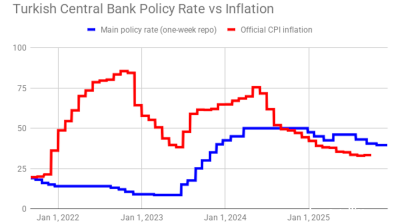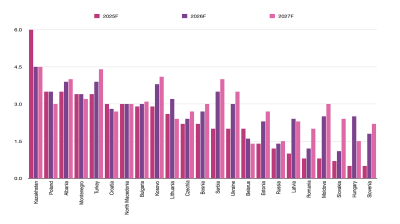Workers in Slovakia are the most likely among 32 OECD members surveyed in a new study to lose their jobs as automation technologies are adopted.
The report published by the OECD with financial assistance from the European Union looks at the implications of developments in artificial intelligence (AI) and machine learning for demand for workers and specific skills. As new technologies — such as those developed by Bucharest-born UiPath — become more widely used, potential future job losses associated with the adoption of such technologies and the automation of routine tasks are increasingly becoming a question for policymakers.
In the study’s key finding, close to one in two jobs are likely to be significantly affected by automation across the 32 countries surveyed.
About 14% of jobs — currently held by over 66mn workers — in OECD countries participating in the survey of adult skills are highly automatable, meaning they have a more than 70% probability of automation.
A further 32% of jobs have an automation risk of between 50% and 70% which, the authors explain, means there is a possibility of significant change in the way these jobs are carried out as a result of automation. While the entire job can't be automated, a substantial share of the tasks can, which would change the skill requirements for these jobs.
The probability of automation varies significantly between countries, with workers in Slovakia found to be most at risk of losing their jobs to automation. Slovakia has a large automotive industry, with the small Central European country producing more cars per capita than any other state in the world, and automakers are increasingly looking to automate production, especially given the record low unemployment and growing labour shortages in Slovakia and other Visegrad countries.
33% of all jobs in Slovakia are highly automatable, while this is only the case with 6% of the jobs in Norway, says the OECD report. “More generally, jobs in Anglo-Saxon, Nordic countries and the Netherlands are less automatable than jobs in Eastern European countries, South European countries, Germany, Chile and Japan,” it adds.
Across the 32 countries surveyed, the median job is estimated to have a 48% probability of being wholly or partly automated, a figure that rises as high as 62% for the median worker in Slovakia. There are similarly high probabilities of automation for workers in Lithuania and Turkey, and among other East European countries the risk is relatively high in Slovenia and Poland. Among countries from the region, the lowest likelihood of the median job being automated is in Estonia.
Within sectors, automation primarily affects jobs in the manufacturing industry and agriculture, although the report points to other highly automatable segments within the service sector, such as postal and courier services, land transport and food services.
However, the type of job within each sector is also relevant. “The occupations with the highest estimated automatability typically only require basic to low level of education. At the other end of the spectrum, the least automatable occupations almost all require professional training and/or tertiary education,” says the report.
“The cross-country variation in automatability, contrary to expectations, is better explained by the differences in the organisation of job tasks within economic sectors, than by the differences in the sectoral structure of economies,” the report says.
This plays into the core-periphery issue for the Eastern EU member states, where other economists have warned that the type of jobs in those countries are more vulnerable to a future downturn as well as increase automation than the higher value jobs in some West European economies.
A recent report from the Vienna Institute for International Economic Studies (wiiw) warns of the implications of some CEE countries’ high level of specialisation in parts of the supply chain where a where relatively small amount of value is created. By contrast, Western European countries have specialised in areas where very high value is created, says wiiw. As a result, there is a “risk of CEE having broken out of the middle income trap to become stuck in centre-periphery trap,” wiiw economist Richard Grieveson said in March.
The OECD report’s authors do, however, add a “health warning”, stressing for example that their estimates refer to “technological possibilities”, while adoption of automation systems is likely to be influenced by other factors such as labour regulations, unit labour costs and social preferences with regard to automation.
“In addition, technology will without doubt also bring about many new jobs,” says the report, which cites links found between “automation and job growth in the service sector in parallel to job destruction primarily in manufacturing”.
Data

Turkey's central bank remains cautious, delivers 100bp rate cut
Decision comes on eve of next hearing in trial that could dislodge leadership of opposition CHP party.

Polish retail sales return to solid growth in September
Polish retail sales grew 6.4% year on year in constant prices in September, picking up from a 3.1% y/y rise in August, the statistics office GUS said.

Uzbekistan’s nine-month foreign trade nears $60bn
Export growth of 33% and import expansion of 16% y/y produce $6.4bn deficit.

Hungary’s central bank leaves rates unchanged
National Bank of Hungary expects inflation to fall back into the tolerance band by early 2026, with the 3% target sustainably achievable in early 2027 under the current strict policy settings.




